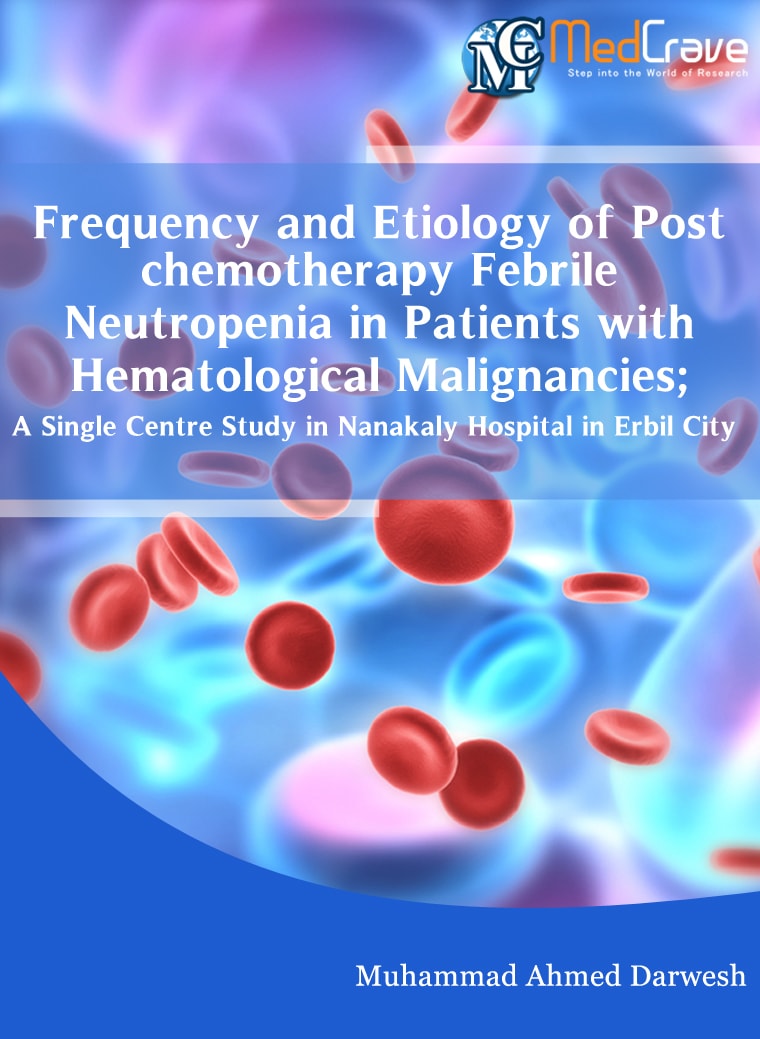eBooks View all | By AtoZ | By category
Frequency and Etiology of Postchemotherapy Febrile Neutropenia in Patients with Hematological Malignancies; a Single Centre Study in Nanakaly Hospital in Erbil City
By Muhammad Ahmed Darwesh
Hawler Medical University, Iraq
Published: Nov 30, 2016 | pg. no: 1 to 11
Abstract: Background: Febrile neutropenia poses a major challenge during treatment of hematological malignancies. Objectives: Identification of neutropenia and its severity in patients receiving chemotherapy and its relation to the frequency of febrile episodes. Elucidation of the clinical foci of infection and causative microorganisms in order to build up prophylactic and therapeutic plans to decrease the frequency and complications of febrile neutropenia. Determination of the relation between using of empirical antibiotics with the duration of febrile neutropenia and using of Granulocyte Colony Stimulating Factor with the duration of neutropenia. Identification of the frequency of comorbidity status and mortality rate in febrile neutropenic patients. Patients and Methods: The study population consisted of 55 patients admitted to the Nanakaly Hospital between 1st September, 2009 and 15th May, 2010.The mean ages of the patients were 32 years, ranging from 14-72 years. 30 of them were males and 25 of them were females. The study outlines the main clinical and microbiological causes of febrile neutropenia with special emphasis on the clinical source of infection and types of cultures. Results: 53 febrile episodes occurred in 90 episodes of neutropenia. Clinical foci of infection were detected in 59% of febrile neutropenic episodes. Pneumonea was the commonest clinically documented infection. Microbiologically documented infections were detected in 26 % of febrile neutropenic episodes. Gram negative infections predominated (Escherichia coli, Pseudomonas aeruginosa and Klebsiella species, were the major isolates). Granulocyte Colony Stimulating Factor was used in 57 neutropenic episodes. Neutropenia duration were (< 7 days) in 28 cases, (7-14 days) in 17 cases and (>14 days) in 12 cases. Empirical antibiotics were used in 77 neutropenic episodes (48 with fever and 29 without fever). Febrile neutropenia duration were (< 7 days) in 37 cases, (7-14 days) in 9 cases and (>14 days) in 2 cases. Medical comorbidities were detected in 19 patients in the form of organ failure, diabetes mellitus and hypotension. The overall mortality rate was 29 %. Conclusion: The frequency of febrile neutropenia is directly related to the severity of neutropenia. In febrile neutropenia, 85 percent have documented infections and 15 percent have unexplained fever. The spectrum of isolates from febrile neutropenic patients in our study shifts towards Gram-negative microorganisms. Because of the shortage of broad spectrum antibiotics, higher mortality has been associated with a documented infection, either microbiologically or clinically.
View eBook
